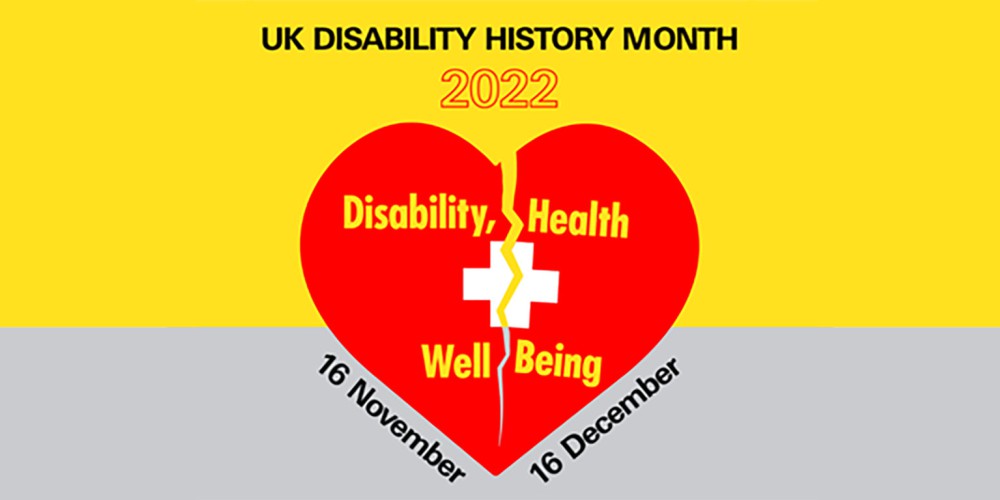Disability History Month in the UK (16th November – 16th December) is an amazing opportunity to familiarise ourselves with key figures and events that led to the improved rights we enjoy today as disabled people, while also recognising that there is much work yet to be done and we have a role to play in continuing the tireless activism of our ancestors.
Sadly, some of the names of these trailblazers aren’t as widely known as they ought to be, nor are the key turning points in the history of disability rights that they spearheaded. This is why we would like to invite you to read our break-down of just a small handful of the most important events in British disability history over the past century and pass on this information to your friends and family so we can all remember and appreciate the efforts of our forebears to make the world a better place for future generations.
1. National League of the Blind Protest (1920)
In the aftermath of World War I, an estimated 2 million British soldiers returned with a newly acquired disability. This sudden shift in demographics meant that there was increasing demand for more employment opportunities to be made available to people with disabilities who could no longer do intensive manual labour.
On 25th May 1920, a trade union for blind workers/veterans of World War I, the National League of the Blind, organised a protest in London against the poverty and poor working conditions faced by the blind and visually impaired. The protest was attended by over 10,000 people and the organisers even met with Prime Minister David Lloyd George to air their concerns for the welfare of blind and visually impaired workers. This led to the Blind Persons Act 1920, the first ever disability-specific legislation not only in the UK, but in the whole world at the time.
This world first provided the momentum necessary to keep applying pressure to the British government in legally enshrining employment rights for a growing Disabled community that in the aftermath of World Wars I and II, was now visible and organised enough that it could no longer be ignored. As a result, subsequent campaigning and protesting led to the UK’s first Disabled Persons Employment Act in 1944.
2. Disabled People’s Direct Action Network (1993)
Barbara Lisicki and Alan Holdsworth are a Disabled couple whose tireless activism and advocacy for disability rights in the UK left an indelible legacy in the disability rights landscape as we know it today. Having met each other through their mutual participation in the Disability Arts Movement, a collective which used the arts to challenge disability stereotypes and “pity narratives” portrayed in the media, Lisicki and Holdsworth joined forces to found the Disabled People’s Direct Action Network (DAN) in 1993.
Through DAN, Lisicki and Holdsworth organised protests at various locations around London to demand legislative protection against discrimination. All of this led to the Disability Discrimination Act being written into law in 1995. Reflecting on this gain in 2015, Lisicki remained insistent that there is still much more left to do: "Some people thought 'we've won with the Disability Discrimination Act' [...] We didn't win. It was never a victory. All that I ever say to people is that at least now the government agrees with us that discrimination happens."
While DAN disbanded in the 2000s, Lisicki and Holdsworth have recently been immortalised in a BBC adaptation of their activism journey called ‘When Barbara met Alan’. We strongly recommend giving this a watch if you’re interesting in learning more about Lisicki and Holdsworth’s impact on the disability rights movement.
3. London hosting the Paralympics (2012)
In 2010, the Labour government brought in the Equality Ac. The aim of this act was to simplify and make the law more accessible by bringing together several anti-discrimination acts that had previously existed separately for each minority group into one unified piece of legislation.
It was against this backdrop that London began making its preparations to host the 2012 Paralympics: a wonderful opportunity to spotlight the achievements of homegrown British talent on the world parasports stage and provide invaluable representation and visibility for young viewers at home.
Apart from elite sportspeople with disabilities getting the screentime and credit they deserve for their commitment to their respective sports, the Paralympics also led to discourse around wider issues faced on a regular basis by people with disabilities, from improving access to venues for athletes and spectators with disabilities or ensuring there is strong representation for people with disabilities among those reporting on Paralympic events.
2 years following the London Paralympics, nearly 70% of Britons believed public attitudes towards people with disabilities had improved after the representation and visibility provided by the Paralympics. However, we cannot expect an event like the Paralympics to single-handedly demolish the deeply ingrained systemic barriers still faced by people with disabilities in the UK today and we would be remiss not to stress that there is much, much more work left to do.
Here at Rangam, we want to be part of this change! Our EMEA team, all of whom are disabled or neurodivergent themselves, collaborate with employers throughout the UK to guide them on their journey with disability inclusion, the end goal being that inclusivity is “just what we do”. If this is something that speaks to you, please do reach out to us at inquiries@sourceabled.co.uk and a member of our team would be delighted to explore with you how we could work together!

